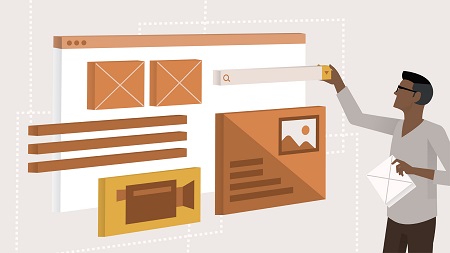
English | MP4 | AVC 1280×720 | AAC 48KHz 2ch | 2h 05m | 267 MB
Interested in adding UX design to your professional tool kit? In this course, Billy Hollis provides developers with an entry point to the principles and process of UX design for typical business apps. Billy begins by going over the state of business applications today, as well as what a well-designed business app looks like. Next, he digs into design principles, discussing how to leverage the human visual system to help users intuitively see what they need. He also goes over the visual and cognitive problems with crowded screens, presenting alternatives that can help you deal with cluttered interfaces. Plus, learn how to refine your ideas using storyboarding. Upon wrapping up this course, you’ll be ready to start creating your own intuitive, elegant UX designs that delight users.
Topics include:
- What a well-designed app looks like
- Leveraging cognitive design principles
- Decluttering crowded screens
- Understanding your users’ needs
- Recording and analyzing user observations
- Storyboarding your ideas
- Helpful techniques for the design process
- Dealing with conflict in design evaluation
Table of Contents
1 Add UX design to your talent stack
2 How this course will work
3 You’re already a UX designer
4 The need for innovative designs
5 Leveraging new technology
6 A well-designed app example
7 The value of good UX design
8 Obstacles to good design
9 Starting on the UX path
10 Example of a design principle
11 Design principles Based in the human brain
12 Design principles in context
13 Cognitive design principles
14 Design principles in the real world
15 Why crowded screens are bad
16 How to declutter crowded screens
17 Bringing it all together
18 Building a design team
19 Business needs Why are you redesigning this app
20 Business needs $100 exercise
21 Choosing users to observe
22 How to observe users in the wild
23 Questions to ask users
24 Static vs. dynamic
25 Recording and analyzing user observations
26 Observation exercise
27 Creating your punch list of design tasks
28 Sketching is the core technique
29 Innovation and ideation
30 Embracing constraints for multiple design solutions
31 Storyboarding
32 Types of storyboards
33 Media for storyboards
34 Storyboarding evaluation
35 Storyboarding exercise
36 Beyond storyboarding Wireframing and illustration
37 Prototyping
38 Evaluation phase
39 Types of design projects
40 Dealing with status quo bias
41 Be bold
42 Breaking free from the past
43 The shapes exercise
44 Seeing the world with new eyes
45 Dealing with conflict in design evaluation
46 The economics of UX design
47 Aesthetics Reaching an acceptable threshold
48 When to use a professional designer and how to find one
49 Next steps
Resolve the captcha to access the links!